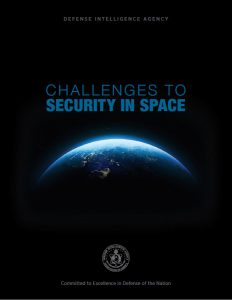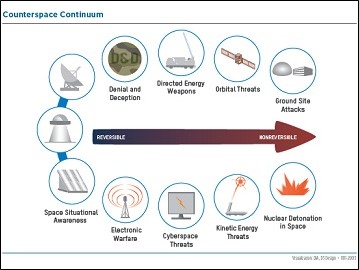[Editor’s Note: Mad Scientist Laboratory is pleased to present our latest edition of “The Queue” – a monthly post listing the most compelling articles, books, podcasts, videos, and/or movies that the U.S. Army’s Mad Scientist Initiative has come across during the previous month. In this anthology, we address how each of these works either informs or challenges our understanding of the Future Operational Environment (OE). We hope that you will add “The Queue” to your essential reading, listening, or watching each month!]
Recently ML Cavanaugh asked and answered in a LA Times Op-Ed piece, “Can science fiction help us prepare for 21st Century Warfare?”
The Mad Science team answers this question with an emphatic, “YES!”
Below is a re-run of our review of Eliot Peper’s argument for business leaders to read more science fiction. His urban planning business case speaks for itself.
For the burgeoning authors among you, submit a story to our Science Fiction Writing Contest 2019 –- you only have two weeks left! — see contest details here.
1. “Why Business Leaders Need to Read More Science Fiction,” by Eliot Peper, Harvard Business Review, 24 July 17.

There are no facts about the future and the future is not a linear extrapolation from the present. We inherently understand this about the future, but Leaders oftentimes seek to quantify the unquantifiable. Eliot Peper opens his Harvard Business Review article with a story about one of the biggest urban problems in New York City at the end of the 19th century – it stank!
Horses were producing 45,000 tons of manure a month. The urban planners of 1898 convened a conference to address this issue, but the experts failed to find a solution. More importantly, they could not envision a future only a decade and a half hence, when cars would outnumber horses. The urban problem of the future was not horse manure, but motor vehicle-generated pollution and road infrastructure. All quantifiable data available to the 1898 urban planners only extrapolated to more humans, horses, and manure. It is likely that any expert sharing an assumption about cars over horses would have been laughed out of the conference hall. Flash forward a century and the number one observation from the 9/11 Commission was that the Leaders and experts responsible for preventing such an attack lacked imagination. Story telling and the science fiction genre allow Leaders to imagine beyond the numbers and broaden the assumptions needed to envision possible futures.
2. Challenges to Security in Space, Defense Intelligence Agency, January 2019.

On 19 Feb 19, President Trump signed Space Policy Directive-4 (SPD-4), establishing the Space Force as the nation’s newest military branch. This force will initially reside within the U.S. Air Force, much as the U.S. Marine Corps resides within the U.S. Navy. Acting Secretary of Defense Patrick Shanahan, as Deputy Secretary of Defense, must now provide the associated draft legislative proposal to the President via the Office of Management and Budget; then it will be submitted to Congress for approval – its specific “details… and how effectively Administration officials defend it on Capitol Hill will determine its fate.”
 Given what is sure to be a contentious and polarizing congressional debate, the Defense Intelligence Agency’s Challenges to Security in Space provides a useful unclassified reference outlining our near-peer adversaries’ (China and Russia) space strategy, doctrine, and intent; key space and counterspace organizations; and space and counterspace capabilities. These latter capabilities are further broken out into: space launch capabilities; human spaceflight and space exploration; Intelligence, Surveillance, and Reconnaissance (ISR); navigation and communications; and counterspace.
Given what is sure to be a contentious and polarizing congressional debate, the Defense Intelligence Agency’s Challenges to Security in Space provides a useful unclassified reference outlining our near-peer adversaries’ (China and Russia) space strategy, doctrine, and intent; key space and counterspace organizations; and space and counterspace capabilities. These latter capabilities are further broken out into: space launch capabilities; human spaceflight and space exploration; Intelligence, Surveillance, and Reconnaissance (ISR); navigation and communications; and counterspace.
In addition to our near-peer’s space capabilities, Iranian and North Korean space challenges are also addressed. The paper explores these nations’ respective national space launch facilities as venues for testing ballistic missile technologies.
The paper concludes with an outlook assessment addressing the increasing number of spacefaring nations, with “some actors integrat[ing] space and counterspace capabilities into military operations,” and “trends… pos[ing] a challenge to U.S. space dominance and present[ing] new risks for assets on orbit.”
 A number of useful appendices are also included, addressing the implications of debris and orbital collisions; counterspace threats illustrating the associated capabilities on a continuum from reversible (e.g., Electronic Warfare and Denial and Deception) to irreversible (e.g., Ground Site Attacks and Nuclear Detonation in Space); and a useful list defining space acronyms.
A number of useful appendices are also included, addressing the implications of debris and orbital collisions; counterspace threats illustrating the associated capabilities on a continuum from reversible (e.g., Electronic Warfare and Denial and Deception) to irreversible (e.g., Ground Site Attacks and Nuclear Detonation in Space); and a useful list defining space acronyms.
With the U.S. and our allies’ continued dependence on space domain operations in maintaining a robust deterrence, and failing that, winning on future battlefields, this DIA assessment is an important reference for warfighters and policy makers, alike.
3. “Superconduction: Why does it have to be so cold?” Vienna University of Technology via ScienceDaily, 20 February 2019. (Reviewed by Marie Murphy)
 One of the major barriers to quantum computing is a rather unexpected one: in order for superconduction to occur, it must be very cold. Superconduction is an electrical current that moves “entirely without resistance” and, as of now, with standard materials superconduction is only possible at -200oC. In quantum computing there are massive amounts of particles moving in interdependent trajectories, and precisely calculating all of them is impossible. Researchers at TU Wien (Technische Universität Wien – Vienna University of Technology) were able to add on to an existing equation that allows for the approximate calculation of these particles in solid matter, not just a vacuum. This new formula may make it easier to develop different superconducting materials and potentially identify materials that could conduct at room temperature.
One of the major barriers to quantum computing is a rather unexpected one: in order for superconduction to occur, it must be very cold. Superconduction is an electrical current that moves “entirely without resistance” and, as of now, with standard materials superconduction is only possible at -200oC. In quantum computing there are massive amounts of particles moving in interdependent trajectories, and precisely calculating all of them is impossible. Researchers at TU Wien (Technische Universität Wien – Vienna University of Technology) were able to add on to an existing equation that allows for the approximate calculation of these particles in solid matter, not just a vacuum. This new formula may make it easier to develop different superconducting materials and potentially identify materials that could conduct at room temperature.
 Quantum computing is heralded as the next big step in the technological revolution and the key to unlocking unthinkable possibilities of human and technological advancement. If there was a way for quantum computing to work at closer to room temperature, then that could lead to a major breakthrough in the technology and the rapid application of quantum computing to the operational environment. There is also a massive first mover advantage in quantum computing technology: the organization that solves the problem first will have unlimited and uncontested use of the technology, and very few people in the world have the technological expertise to quickly replicate the discovery.
Quantum computing is heralded as the next big step in the technological revolution and the key to unlocking unthinkable possibilities of human and technological advancement. If there was a way for quantum computing to work at closer to room temperature, then that could lead to a major breakthrough in the technology and the rapid application of quantum computing to the operational environment. There is also a massive first mover advantage in quantum computing technology: the organization that solves the problem first will have unlimited and uncontested use of the technology, and very few people in the world have the technological expertise to quickly replicate the discovery.
4. “The Twenty-First Century General, with Dr. Anthony King,” hosted by John Amble, Modern War Institute Podcast, 7 March 2019.

In this prescient episode of the Modern War Institute podcast, John Amble interviews Dr. Anthony King (Chair of War Studies in the Politics and International Studies Department at Warwick University in the United Kingdom) about his new book Command: The Twenty-First Century General. Amble and Dr. King have a detailed and informative discussion about the future of command as the world has moved into a digital age and what it’s meant for the battlefield, warfighters, commanders, and even organizational staffs.
One of the more impactful ideas explored in this podcast, in relation to the future of warfare, was the idea of collective decision-making on the part of commanders, as opposed to previous “hero era” individualistic leadership typified by General Patton and Field Marshals Rommel and Montgomery. Command teams (divisional staff, for example) have swelled in size not simply to create meaningless career milestones but due to digital age revolutions that allowed for increasingly complex operations.
With artificial intelligence becoming increasingly pervasive throughout the future operational environment and likely ever-present on future command staffs, Dr. King points out that staffs may not become smaller but actually may increase as operations become even more complex. The changing character of future warfare (especially the emergence of AI) may enable incredible new capabilities in coordination, synchronization, and convergence of effects but adversaries using more simplistic command structures could expose this inherent complexity through speed and decisiveness.
5. “Alexa, call the police! Smart assistants should come with a ‘moral AI’ to decide whether to report their owners for breaking the law, experts say,” by Peter Lloyd, Daily Mail.com, 22 February 2019.
Scientists at the University of Bergen in Norway discussed the idea of a “moral A.I.” for smart home assistants, like the Amazon Echo, Google Home, and Apple HomePod at the AAAI / ACM Conference for Artificial Intelligence, Ethics and Society in Hawaii. Marija Slavkovik, associate professor at the department of information science and media studies “suggested that digital assistants should possess an ethical awareness that at once represents both the owner and the authorities — or, in the case of a minor, their parents.” Recall that previously, police have seized information gathered by smart devices.
 Moral A.I. would require home assistants to “decide whether to report their owners for breaking the law,” or to remain silent. “This would let them weigh whether to report illegal activity to the police, effectively putting millions of people under constant surveillance.” Stakeholders “need to be identified and have a say, including when machines shouldn’t be able to listen in. Right now only the manufacturer decides.” At present, neither stakeholders nor consumers are in charge of their own information and companies use our personal information freely, without commensurate compensation.
Moral A.I. would require home assistants to “decide whether to report their owners for breaking the law,” or to remain silent. “This would let them weigh whether to report illegal activity to the police, effectively putting millions of people under constant surveillance.” Stakeholders “need to be identified and have a say, including when machines shouldn’t be able to listen in. Right now only the manufacturer decides.” At present, neither stakeholders nor consumers are in charge of their own information and companies use our personal information freely, without commensurate compensation.
 If developed, brought to market, and installed (presumably willingly) in our homes (or public spaces), is Moral A.I. a human problem?
If developed, brought to market, and installed (presumably willingly) in our homes (or public spaces), is Moral A.I. a human problem?
Yes. Broadly speaking, no place on earth is completely homogeneous; each country has a different culture, language, beliefs, norms, and society. Debating the nuances, the dystopian sounding and murky path of Moral A.I. involves the larger question on how should ethics be incorporated in AI.
Furthermore – should lethal autonomous weapons be used on humans? In his recent post entitled “AI Enhancing EI in War,” MAJ Vincent Dueñas addressed how AI can mitigate a human commander’s cognitive biases and enhance his/her (and their staff’s) decision-making to assist them in commanding, fighting, and winning on future battlefields. Humans are susceptible to cognitive biases and these biases sometimes result in catastrophic outcomes—particularly in the high stress environment of wartime decision-making. AI offers the possibility of mitigating the susceptibility of negative outcomes in the commander’s decision-making process by enhancing the collective Emotional Intelligence (EI) of the commander and his/her staff. For now, however, AI is too narrow to carry this out in someone’s home, let alone on the battlefield.
6. “SS7 Cellular Network Flaw Nobody Wants To Fix Now Being Exploited To Drain Bank Accounts,” by Karl Bode, Techdirt.com, 11 February 2019.
 Signaling System 7 (SS7) is a series of cellular telephone protocols first built in 1975 that allows for telephonic communication around the globe. Within this set of protocols is a massive security vulnerability that has been public knowledge for over a decade. The vulnerability allows a nefarious actor to, among other things, track user location, dodge encryption, and record conversations. What’s more, this can be done while looking like ordinary carrier chatter and, in some cases, can be used to gain access to bank accounts through 2-factor authentication and effectively drain them.
Signaling System 7 (SS7) is a series of cellular telephone protocols first built in 1975 that allows for telephonic communication around the globe. Within this set of protocols is a massive security vulnerability that has been public knowledge for over a decade. The vulnerability allows a nefarious actor to, among other things, track user location, dodge encryption, and record conversations. What’s more, this can be done while looking like ordinary carrier chatter and, in some cases, can be used to gain access to bank accounts through 2-factor authentication and effectively drain them.
This is significant from a military perspective because, as highlighted within a recent blog post, we have already seen near-peer adversarial states execute attacks through cellphone activity, personal wearable device location data, and social media. These states attempt to degrade soldier morale by launching information operations campaigns targeted at soldier families or the soldiers themselves through text messages, social media, or cell phone calls. The SS7 vulnerability could make these campaigns more successful or easier to execute and allow them to penetrate farther into the personal lives of soldiers than ever before.
the soldiers themselves through text messages, social media, or cell phone calls. The SS7 vulnerability could make these campaigns more successful or easier to execute and allow them to penetrate farther into the personal lives of soldiers than ever before.
Lastly, this vulnerability highlights an enduring trend: legacy communications infrastructure still exists and is still heavily used by civilian and military alike. This infrastructure is old and vulnerable and was designed before cellphones were commonplace. Modernizing this infrastructure around the world would be costly and time consuming and there has been little movement on fixing the vulnerability itself. Despite this vulnerability being known since 2008, is this something that will affect operations going forward? With no intrusion signature, will the Army need to modify existing policy on personal electronic devices for Soldiers and their families?
If you read, watch, or listen to something this month that you think has the potential to inform or challenge our understanding of the Future OE, please forward it (along with a brief description of why its potential ramifications are noteworthy to the greater Mad Scientist Community of Action) to our attention at: usarmy.jble.tradoc.mbx.army-mad-scientist@mail.mil — we may select it for inclusion in our next edition of “The Queue”!



